Surely one of the biggest perks of being a royal is getting to choose from a raft of sparkling tiaras. So, let’s take a look at the fabulous tiaras owned by the British royal family.
Queen Mary’s Fringe Tiara
Queen Mary’s Fringe Tiara was lent to the young Elizabeth by her grandmother, Queen Mary of Teck, on her wedding day. Before that, Queen Mary had it made from a diamond necklace. Famously, this tiara snapped on Elizabeth and Philip’s big day (pictured). Thankfully, royal perks meant it was mended by a jeweler just in time for the ceremony.

The Brazilian Aquamarine Tiara
One of the great things about being Britain’s longest-living and longest-reigning monarch is that you get plenty of opportunities to wear your tiaras. Here’s Queen Elizabeth wearing the Brazilian Aquamarine Tiara throughout her reign.

This tiara was commissioned by the Queen to match a diamond and aquamarine jewelry set given to her by Brazil for her 1953 coronation. After all, what’s the use in aquamarine earrings and a necklace without a tiara to top the whole look off?
The Cubitt-Shand Tiara
Up next is the Cubitt-Shand Tiara, which belongs to the family of Camilla Parker Bowles. Camilla Parker Bowles has been married to Prince Charles since 2005, and also has an aristocratic background.
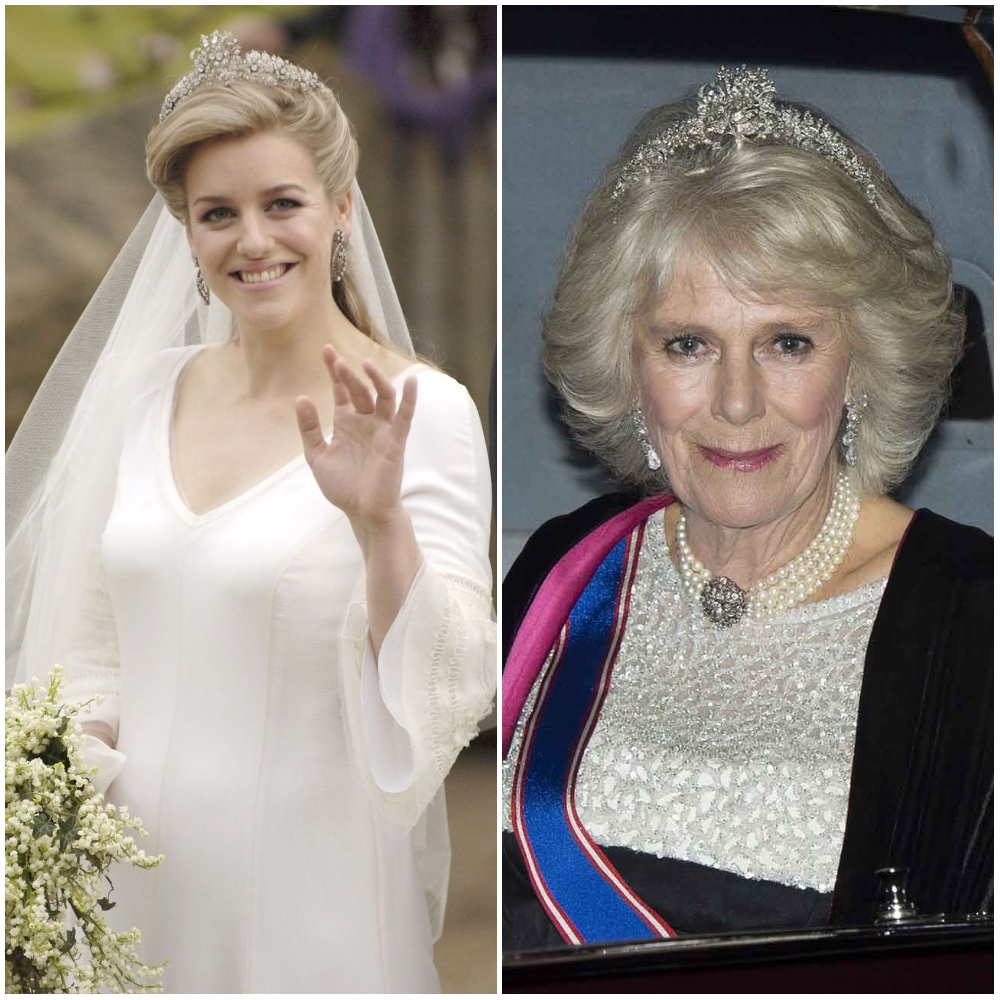
This tiara belonged to Camilla Parker Bowles’ grandmother, Sonia Cubitt, and then to her mother, Rosalind Shand. The royal wore the tiara for her first wedding, to Andrew Parker Bowles in 1973. In 2006, Camilla and Andrew’s daughter, Laura Lopes, wore the floral Cubitt-Shand tiara on her wedding day.
The Lover’s Knot Tiara
The Lover’s Knot tiara is one of the more well-known pieces amongst the British royal jewels. Here, Princess Diana wears it in 1989, and Kate Middleton in 2018. The tiara features 19 baroque pearls and rose-cut diamonds, set in a series of heart-shaped knots.

The Lover’s Knot tiara was commissioned by Queen Mary, and later given by Queen Elizabeth to Princess Diana as a wedding present. After the couple’s official split in 1996, Diana returned the tiara to the Queen.
The State Diadem
This stately-looking headpiece is known as the State Diadem, and has been in the British royal family since 1821. The diadem was made for King George IV’s coronation, and later passed to Queen Adelaide.
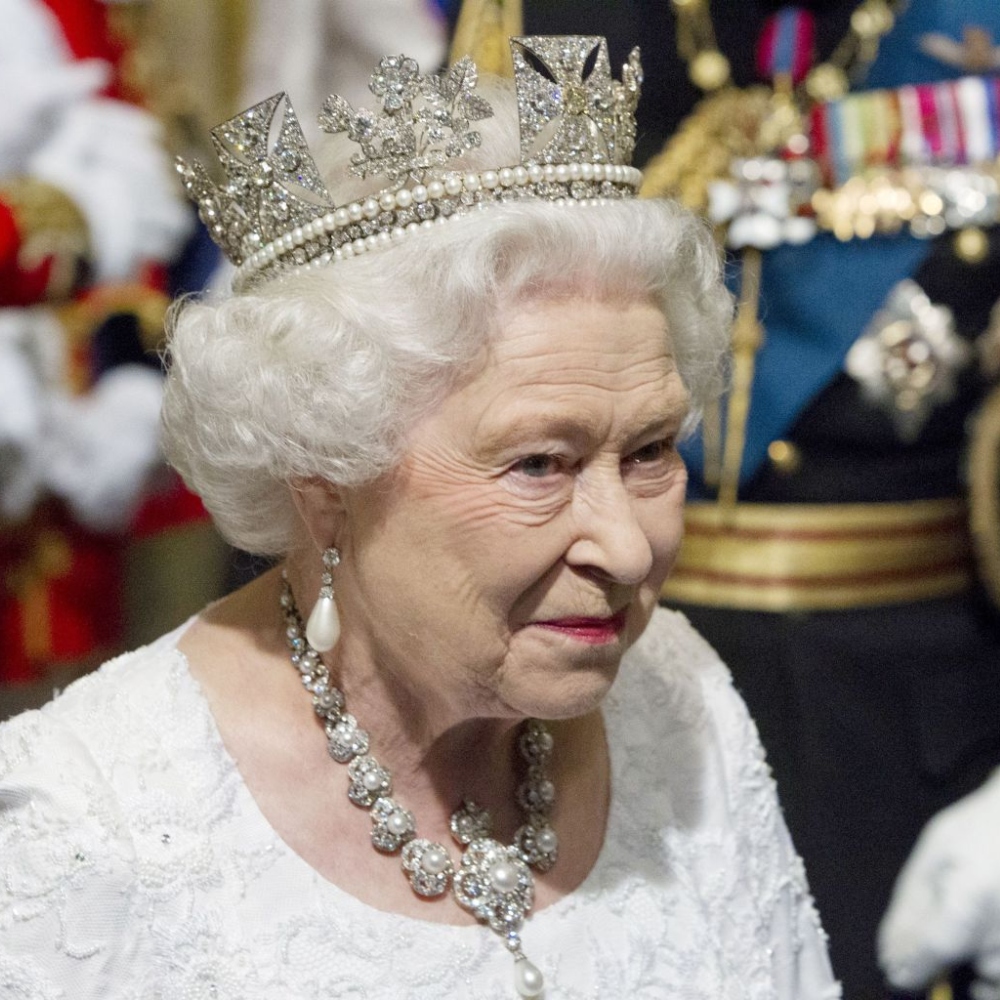
Since then, it’s been tradition for female monarchs to wear the State Diadem. The Queen wore it for her coronation, and on her way to and from every State Opening of Parliament since. This ornate tiara has over 1000 diamonds, 170 pearls, and a four-carat yellow diamond at the center.
Queen Mary’s Bandeau Tiara
For Meghan Markle’s royal wedding to Prince Harry in 2018, the Duchess chose to wear Queen Mary’s Bandeau Tiara. This gorgeous piece was created in 1932 from a brooch Queen Mary received for her marriage to King George V.

The Queen Mary Bandeau Tiara has a flexible band of eleven sections, all set with pavé diamonds, and the original diamond brooch in the center. This tiara was inherited by Elizabeth from her grandmother, and Meghan picked it out for her wedding day.
The Lotus Flower Tiara
We particularly like the Lotus Flower Tiara, especially worn in a flapper-style by the Queen Mother (pictured). This headpiece was commissioned by the Queen Mother in 1923 as a way of repurposing a pearl and diamond necklace.
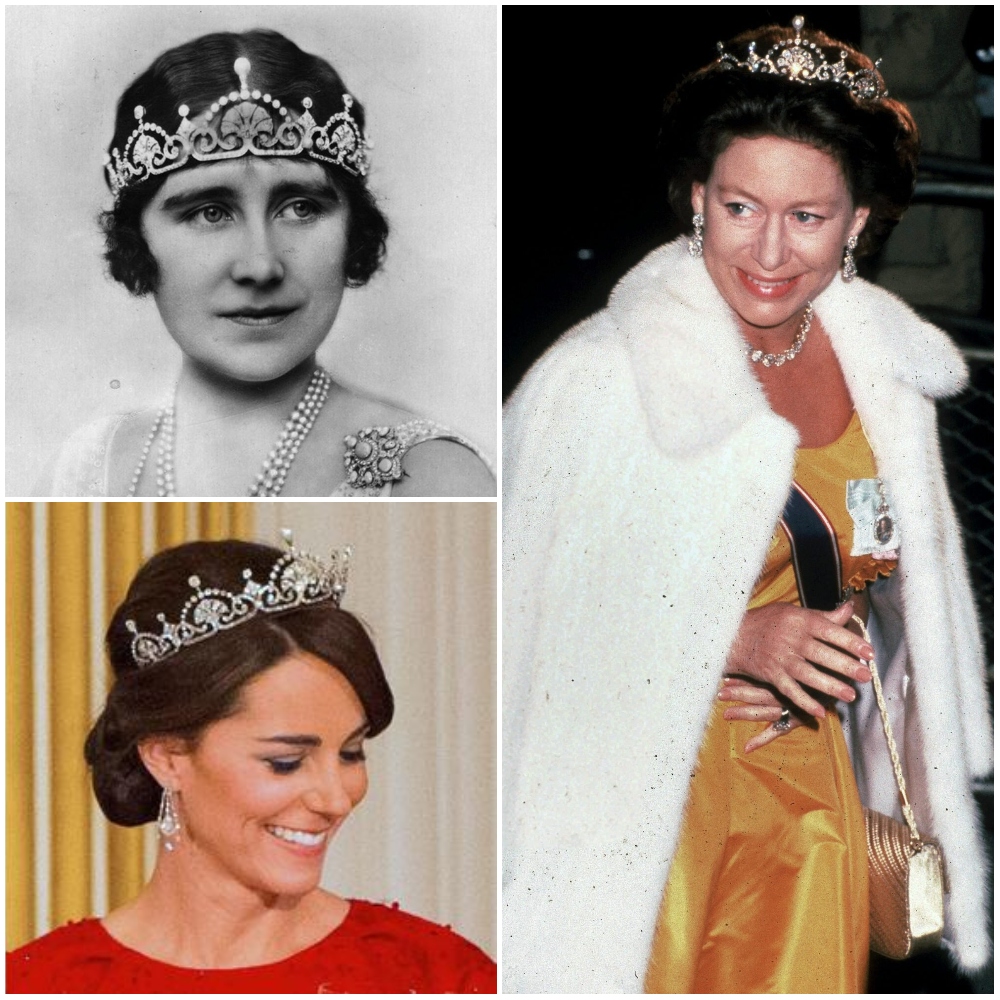
Eventually, in 1959, the tiara was given to Princess Margaret by her mother. Since then, it has been worn by the Countess of Snowdon on her wedding day, and by Kate Middleton. The Duchess of Cambridge wore the Lotus Flower Tiara while meeting Chinese President Xi Jinping in 2015.
Princess Andrew’s Meander Tiara
Now, here’s an interesting tiara. The Meander Tiara actually belongs to Prince Philip’s family, who was the royal family of Greece. This diadem belonged to Prince Philip’s mother, Princess Andrew of Greece — hence the Greek design.
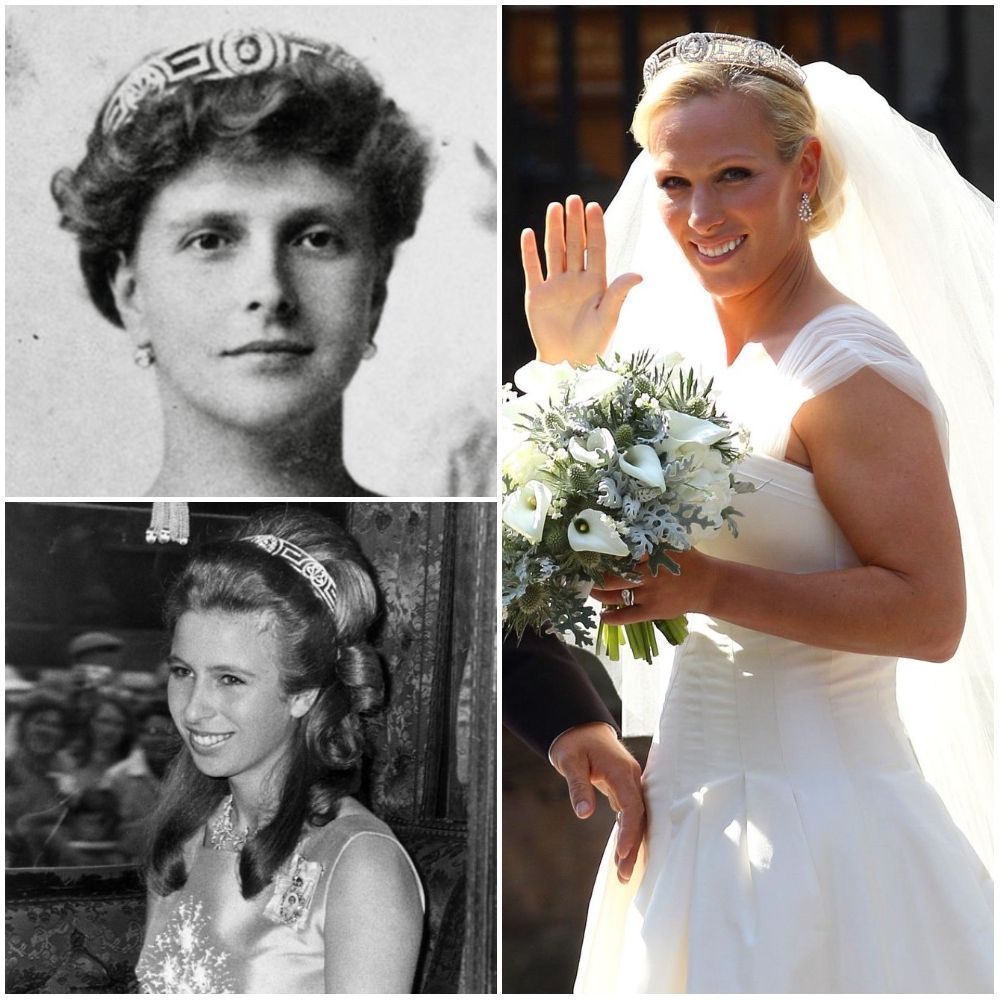
The Meander Tiara was worn by Princess Anne as recently as 2018. It was also the tiara of choice for her daughter, Zara Tindall, on her wedding day in 2011. This striking tiara is made of diamonds, and is thought to have been made by Cartier in turn of the century France.
The Spencer Family Tiara
We know that Princess Diana received the Lover’s Knot tiara from the Queen for her wedding day, but she actually didn’t wear it on the big day. Instead, Diana opted for one of her family tiaras (because whose family doesn’t have its own tiara?).

The Spencer Family Tiara is made from various pieces of jewelry from across different eras. The centerpiece was given to Diana’s grandmother for her wedding in 1919. Both of Princess Diana’s sisters also wore this headpiece on their wedding days.
The York Diamond Tiara
Sarah Ferguson walked up the aisle to marry Prince Andrew with a flower crown on her head. She later removed the flowers to reveal the York Diamond Tiara, made just for her. This tiara was given to Fergie as a wedding gift from the Queen and Prince Philip.
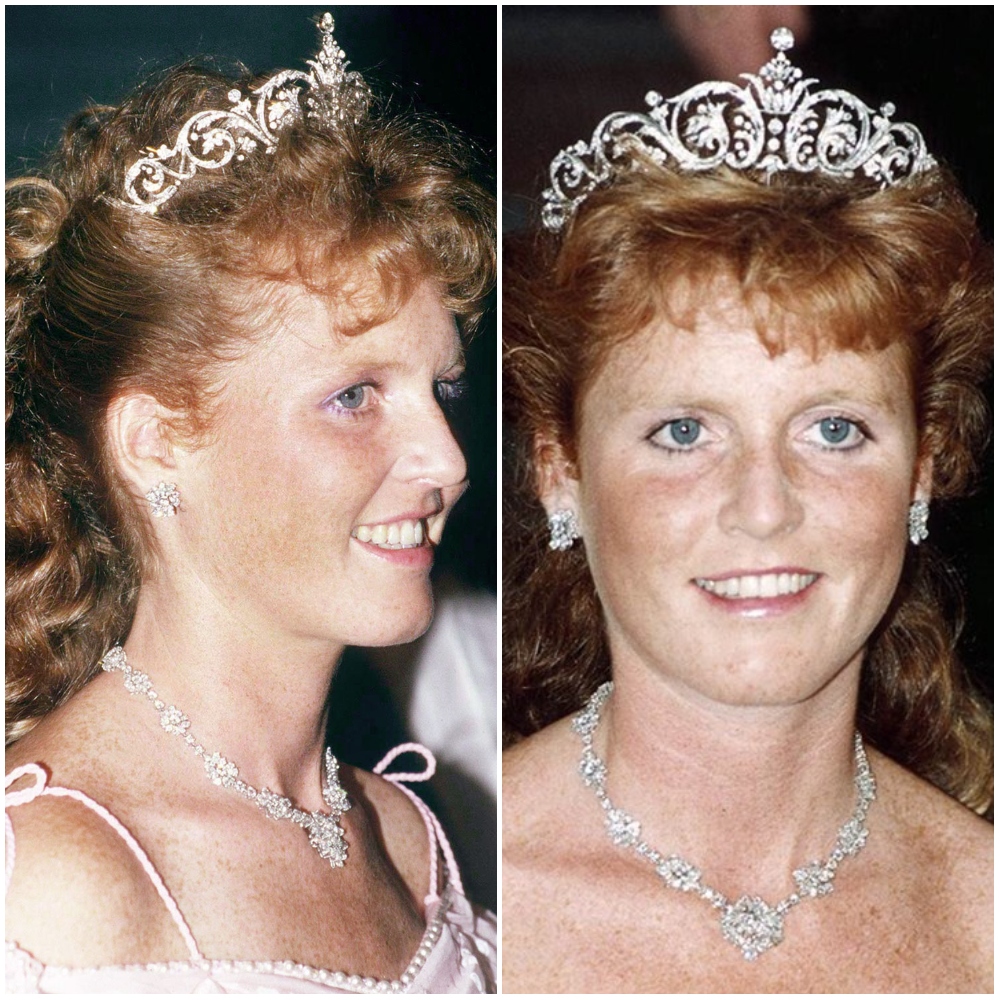
Sarah Ferguson wore the York Diamond Tiara throughout her marriage, and still owns the piece. In fact, Fergie doesn’t even need a royal occasion to whip it out — she wore it to Elton John’s White Tie and Tiara Ball in 2001.
The Cambridge Sapphire Parure
The Cambridge Sapphire Parure has a long history leading back to the second half of the 19th century. Queen Mary (pictured) inherited the piece from her aunt, Princess Augusta, who had gotten it from her mother, the Duchess of Cambridge.
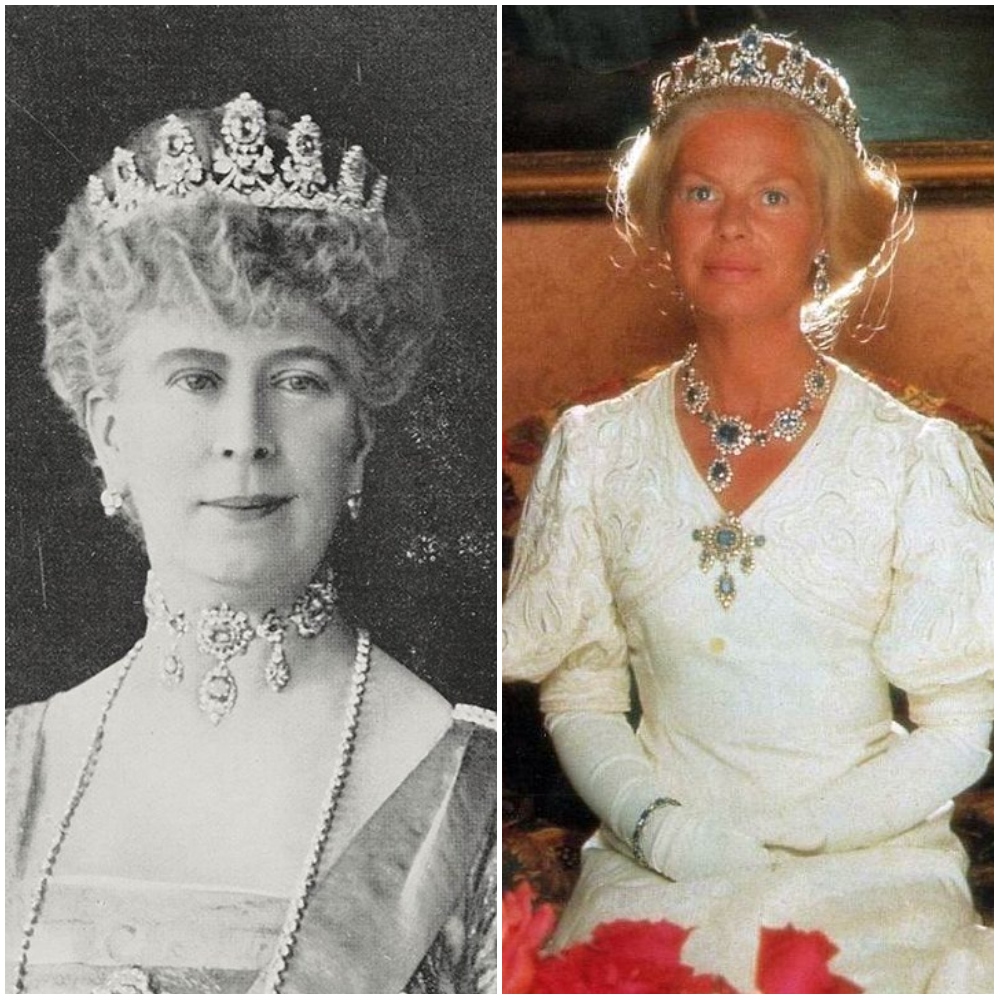
Eventually, Queen Mary gifted the Cambridge Sapphire Parure to her goddaughter, Princess Marina of Greece and Denmark, for her 1934 wedding to Mary’s son, George. Then, Duchess Katherine (pictured) inherited the tiara from her mother-in-law – Princess Marina – in 1968.
The Strathmore Rose Tiara
Here’s another fabulous set of vintage pictures showing the Queen Mother in full-on royal flapper mode. In these pictures, Lady Elizabeth wears the Strathmore Rose Tiara, given to her by her father before her wedding.
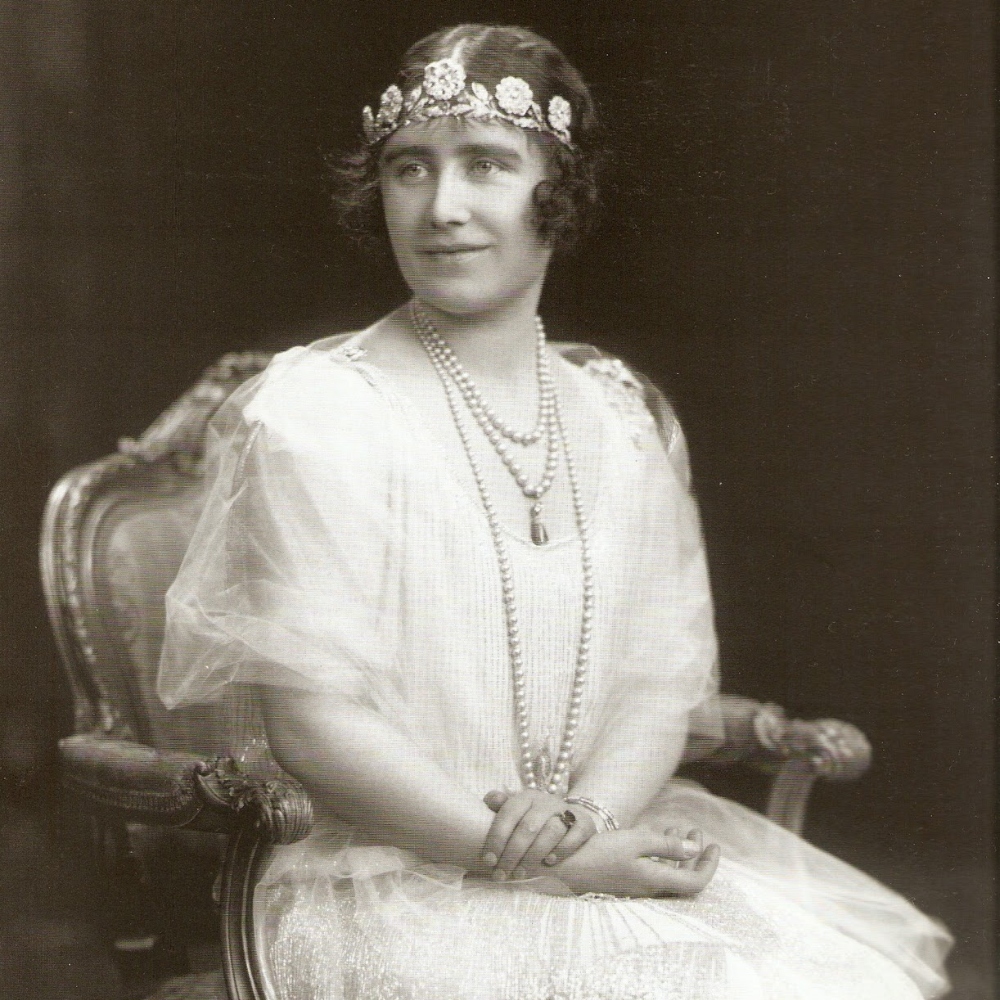
This tiara was purchased in the 1920s, but made in the late 19th century. Interestingly, the flowers can be removed and worn as brooches. Alternatively, they can be swapped out for sapphires (as you do). This tiara hasn’t been seen for some time.
The Belgian Sapphire Tiara
Queen Elizabeth received a sapphire necklace and set of earrings from her father, King George VI, as a wedding present. Some decades later, the monarch purchased a 19th-century sapphire necklace that had once belonged to Princess Louise of Belgium. From that, came the Belgian Sapphire Tiara.
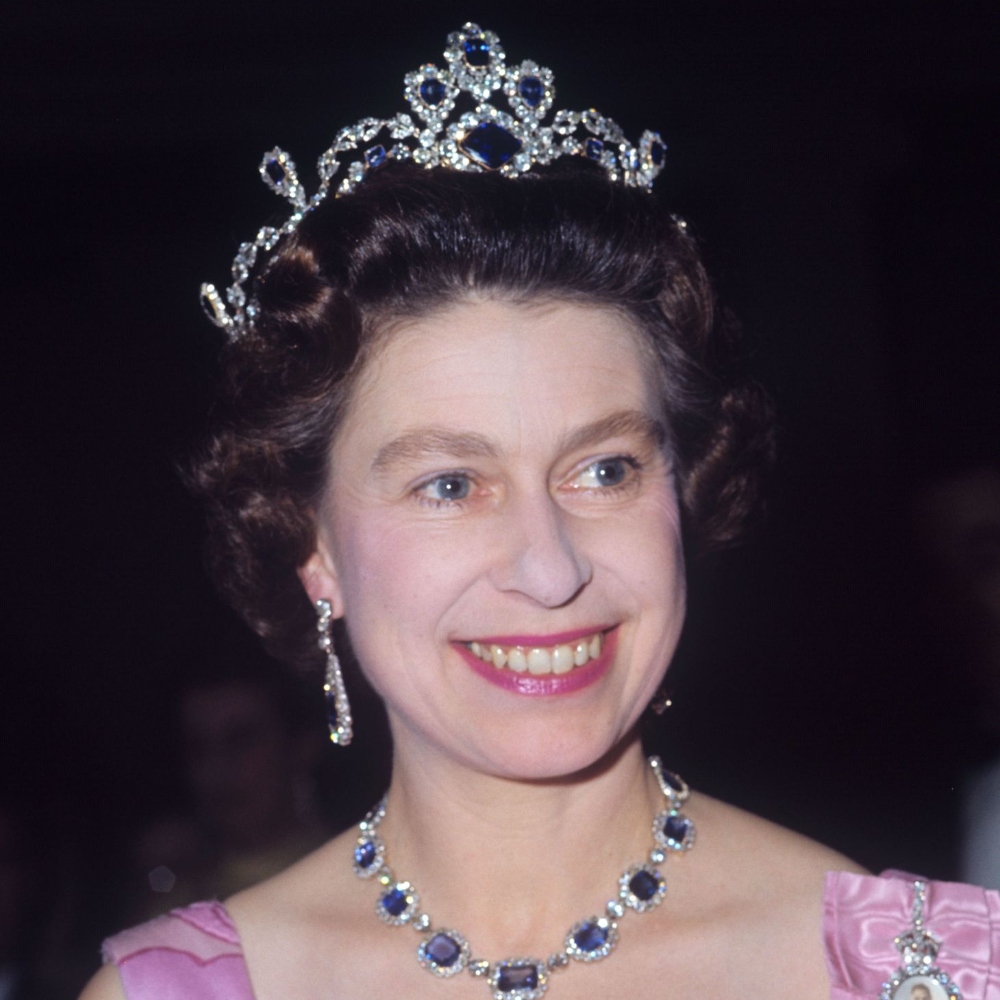
This tiara was worn by Queen Elizabeth fairly regularly between the ’60s and ’90s but then disappeared to the vaults. However, the Queen wore the stunning sapphire tiara at a state banquet for the Chinese president in 2015.
The Greville Tiara
Socialite Margaret Greville was a close friend of Queen Mary. When she passed away, she left all of her jewelry to the Queen Mother — then known as Queen Elizabeth — including this huge tiara. The honeycomb-patterned tiara is made from diamonds and platinum, and was a favorite of the Queen Mother.

Eventually, the Greville Tiara was bequeathed to Queen Elizabeth II, but she has never worn it in public. However, Camilla Parker Bowles is a fan of the piece, and it has since become her signature tiara.
Queen Alexandra’s Kokoshnik Tiara
Back in the 19th century, a group of well-to-do ladies formed the “Ladies of Society” committee. Together, they raised the funds to make a piece of jewelry for Queen Alexandra to celebrate her 10-year wedding anniversary to King Edward VII.
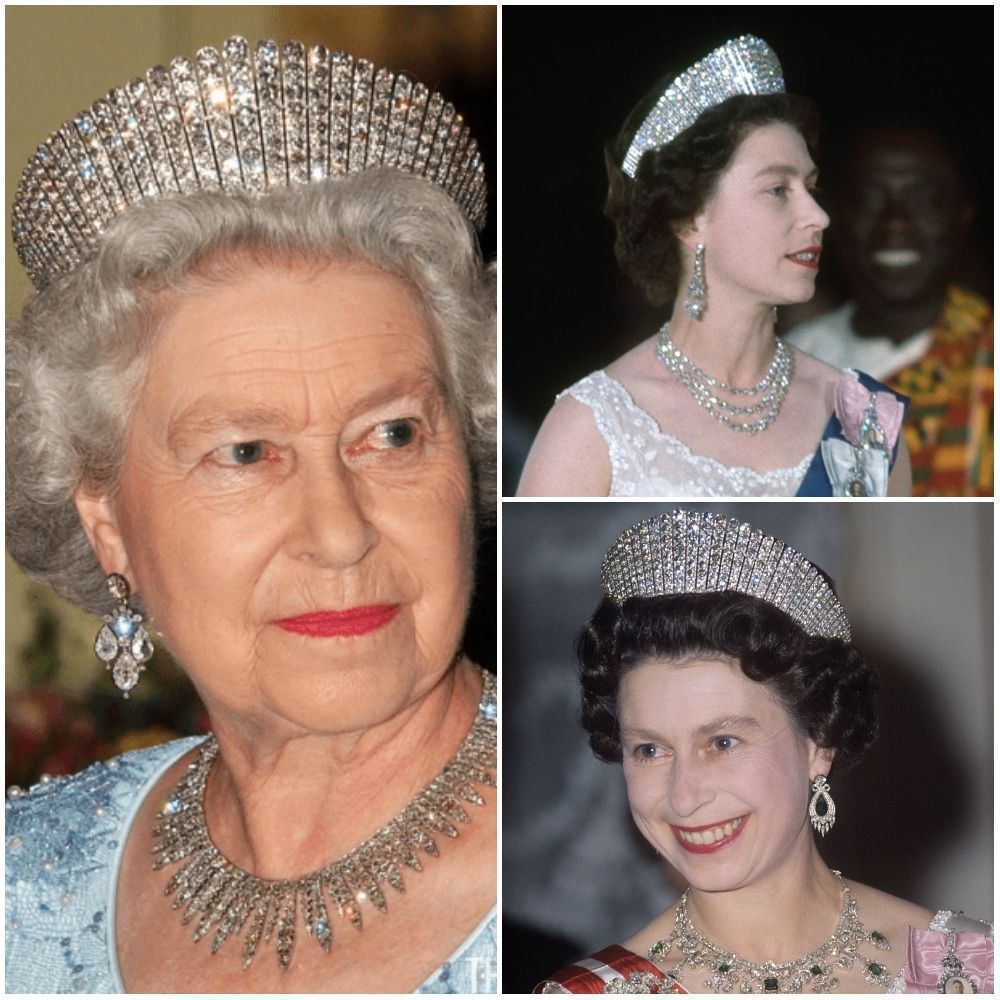
Alexandra wanted a tiara just like her sister — Empress Marie Feodorovna of Russia. This meant a kokoshnik style, which is a halo shape. The tiara has 61 diamond bars and has been worn many times by Queen Elizabeth II.
The Cartier Halo Tiara
For Kate Middleton’s big day, she opted to wear the Cartier Halo Tiara. This piece was commissioned in 1936 by King George VI for his wife, and later gifted to the Queen on her 18th birthday. Kate Middleton borrowed the tiara for her wedding to Prince William in 2011.

This tiara features over 800 diamonds, and has scroll shapes in a geometric pattern. Because of this, it’s sometimes known as the Scroll Tiara. While this tiara technically belongs to the Queen, her younger sister Margaret wore it often.
The Iveagh Tiara
When Queen Mary was set to marry King George V, she received several pieces of jewelry, including the Iveagh Tiara. The headpiece was a gift from Irish aristocrats, Lord and Lady Iveagh (members of the famed Guinness family).
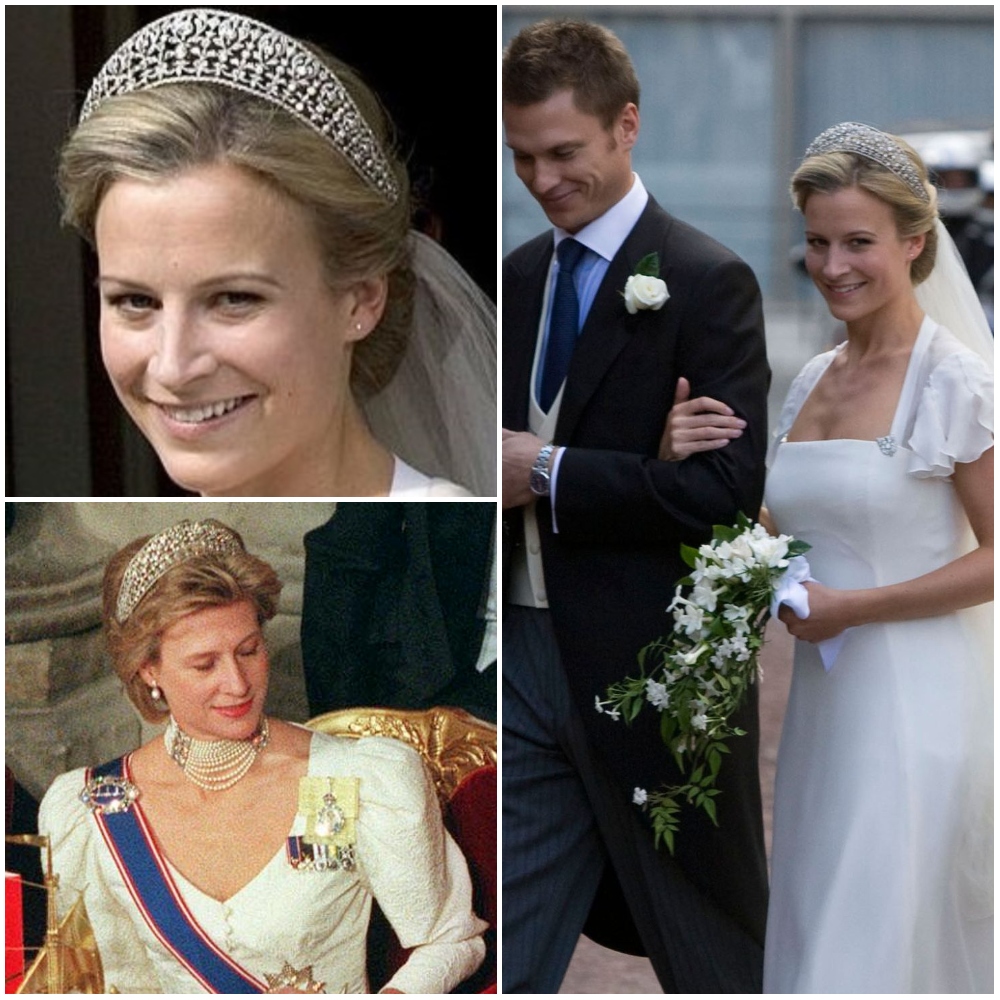
Queen Mary passed the tiara to her daughter-in-law, Princess Alice, who eventually passed it to her daughter-in-law, Birgitte (pictured). More recently, Birgitte’s daughter, Lady Rose Gilman, wore the Iveagh Tiara on her wedding day in 2008.
Girls of Great Britain and Ireland Tiara
This is one of the Queen’s most recognizable tiaras, known as The Girls of Great Britain and Ireland Tiara. This diamond headpiece was gifted to Queen Mary for her wedding by her ladies in waiting, in 1898. She then gave it to Queen Elizabeth as a wedding gift in 1947.
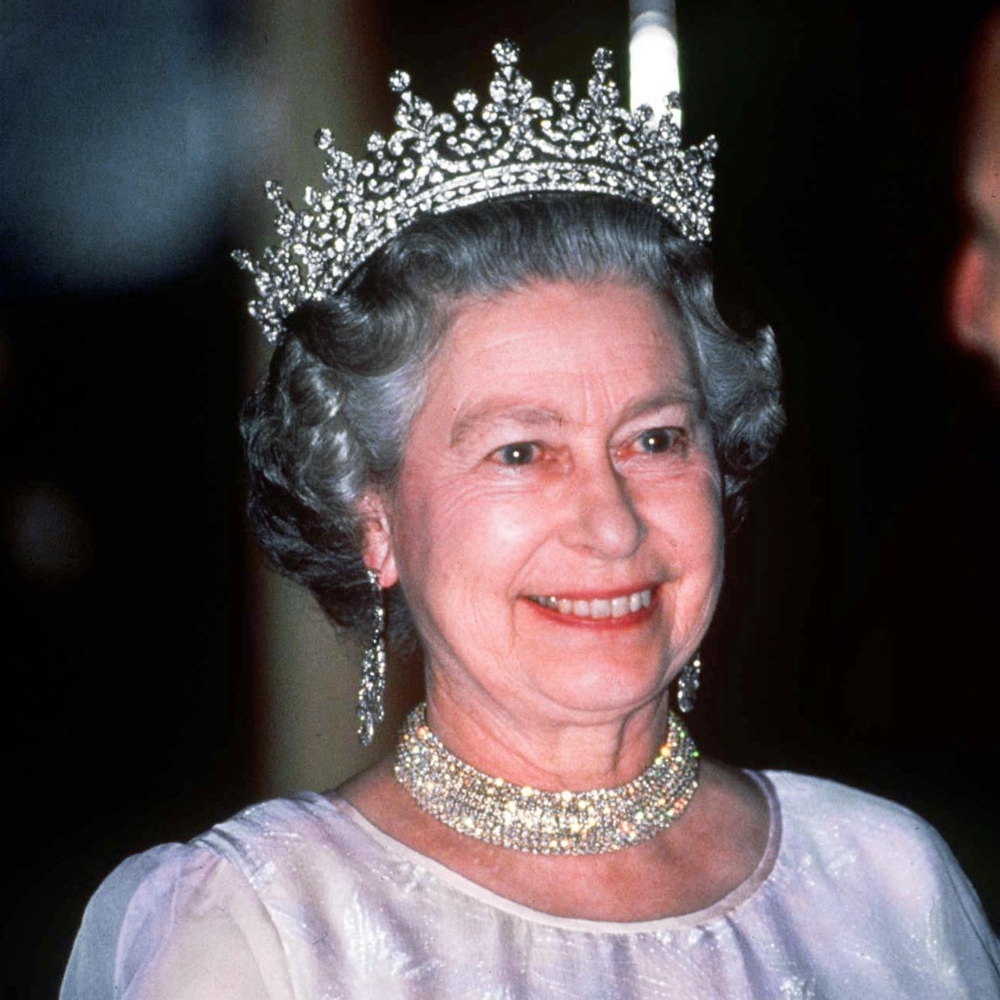
As with some other royal tiaras, the Girls of Great Britain and Ireland Tiara can also be worn as a necklace. This is the tiara that the Queen wears on certain banknotes.
The Festoon Tiara
Our next royal tiara belongs to Princess Anne (pictured), the only daughter of Queen Elizabeth II. Strangely, the Princess was gifted the sparkling tiara from a Hong Kong firm after she christened one of their ships.
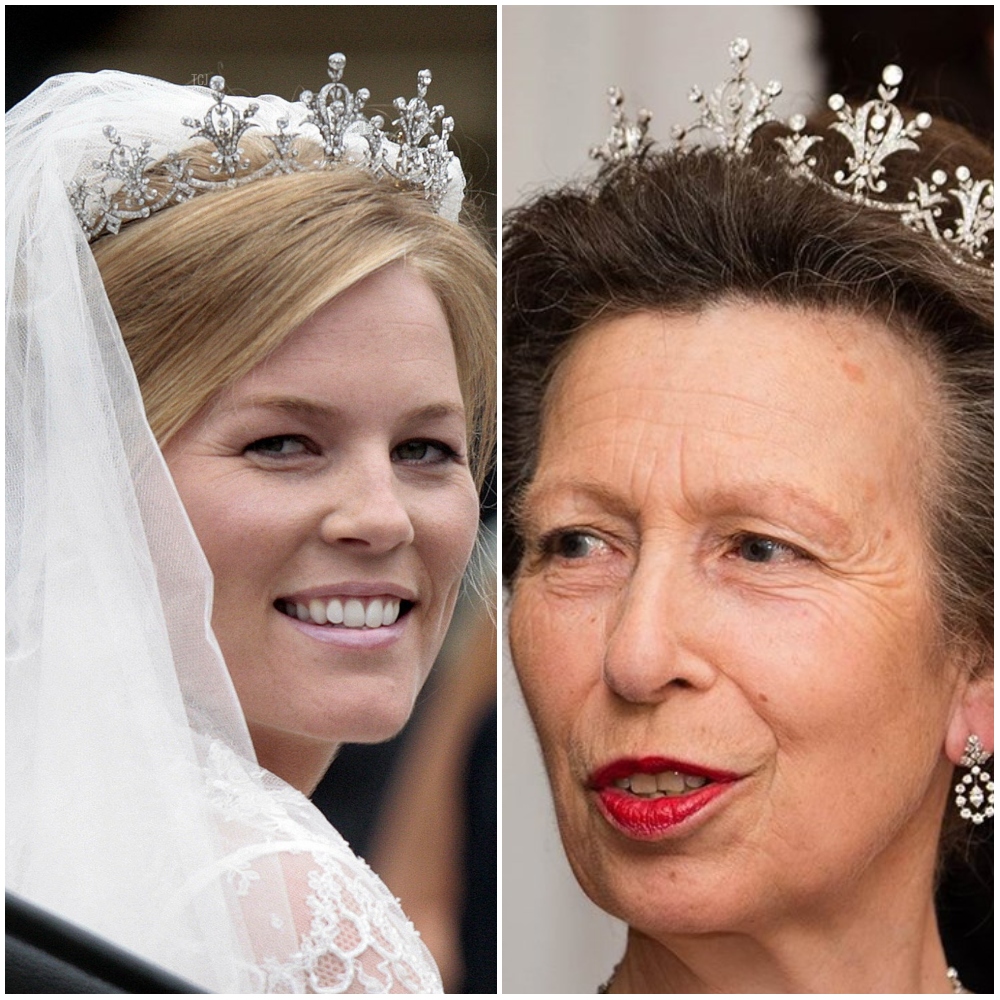
Princess Anne has had the delicate Festoon Tiara since 1973, and has worn it on a regular basis. In 2008, Anne lent the diamond tiara to her new daughter-in-law, Autumn Kelly (pictured), for her wedding to Anne’s son, Peter Phillips.
The Cartier Indian Tiara
The Cartier Indian Tiara was first made for Queen Victoria’s granddaughter, Princess Marie Louise. The tiara features pearls, diamonds, and sapphires, in an “Indian” design — hence the name. The Princess wore the tiara at many royal events, including Queen Elizabeth’s coronation.
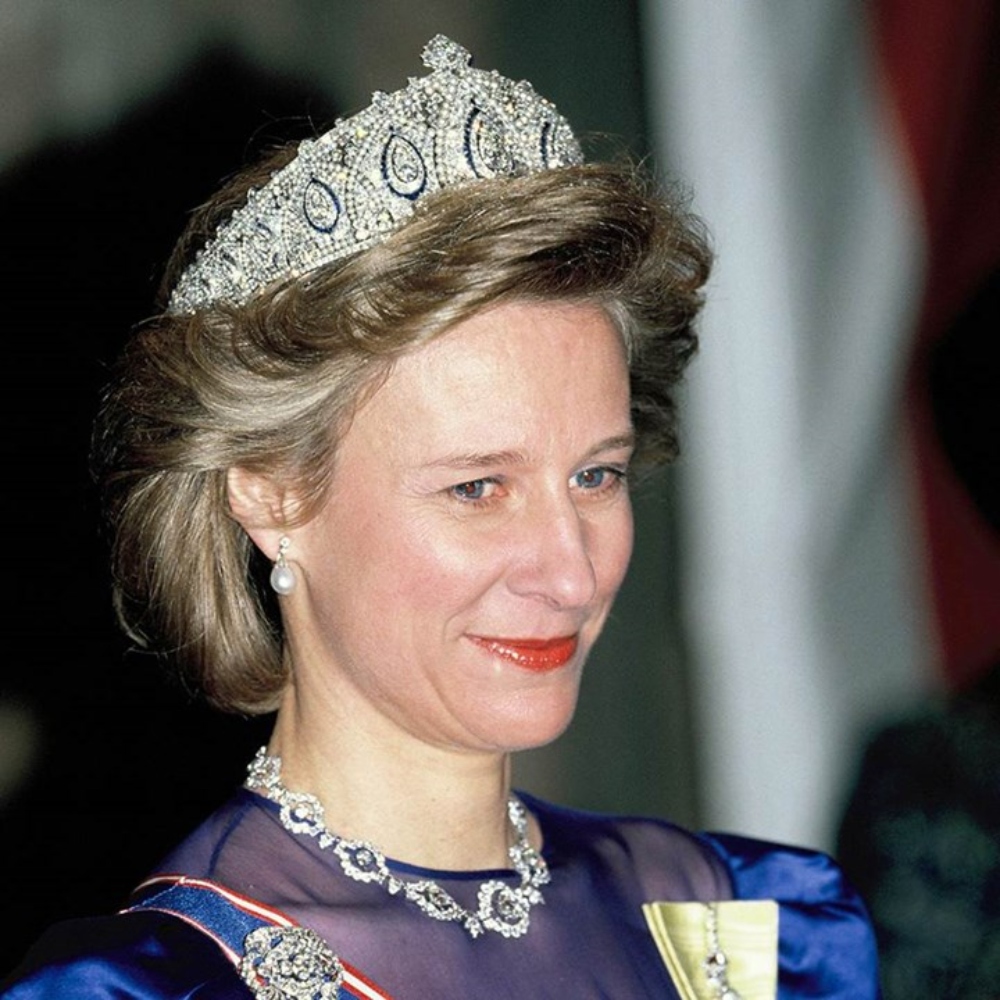
Princess Marie Louise’s godson, Prince Richard of Gloucester, inherited the tiara and gave it to his wife, Birgitte (pictured). This is certainly an impressive headpiece, so it’s no surprise the Birgitte brings it out fairly regularly.
The Aquamarine Pineflower Tiara
Our next royal tiara is rarely seen, but dates back to King George VI and Queen Elizabeth. The Aquamarine Pineflower tiara was commissioned by the king for his wife as an anniversary gift in the 1940s. The Queen Mother later gave the jeweled headpiece to her granddaughter, Princess Anne, as a wedding gift.

Princess Anne has worn the Aquamarine Pineflower Tiara many times over the years. The tiara has been reworked, hence the slightly different designs. However, it always includes a pine cone.
Burmese Ruby Tiara
Now, this is a tiara. This huge, bejeweled tiara is known as the Burmese Ruby Tiara. The Queen commissioned this headpiece in the ’70s, using rubies given to her by Myanmar (formerly Burma) as a wedding gift. These stones were actually banned in the US, and are extremely rare.
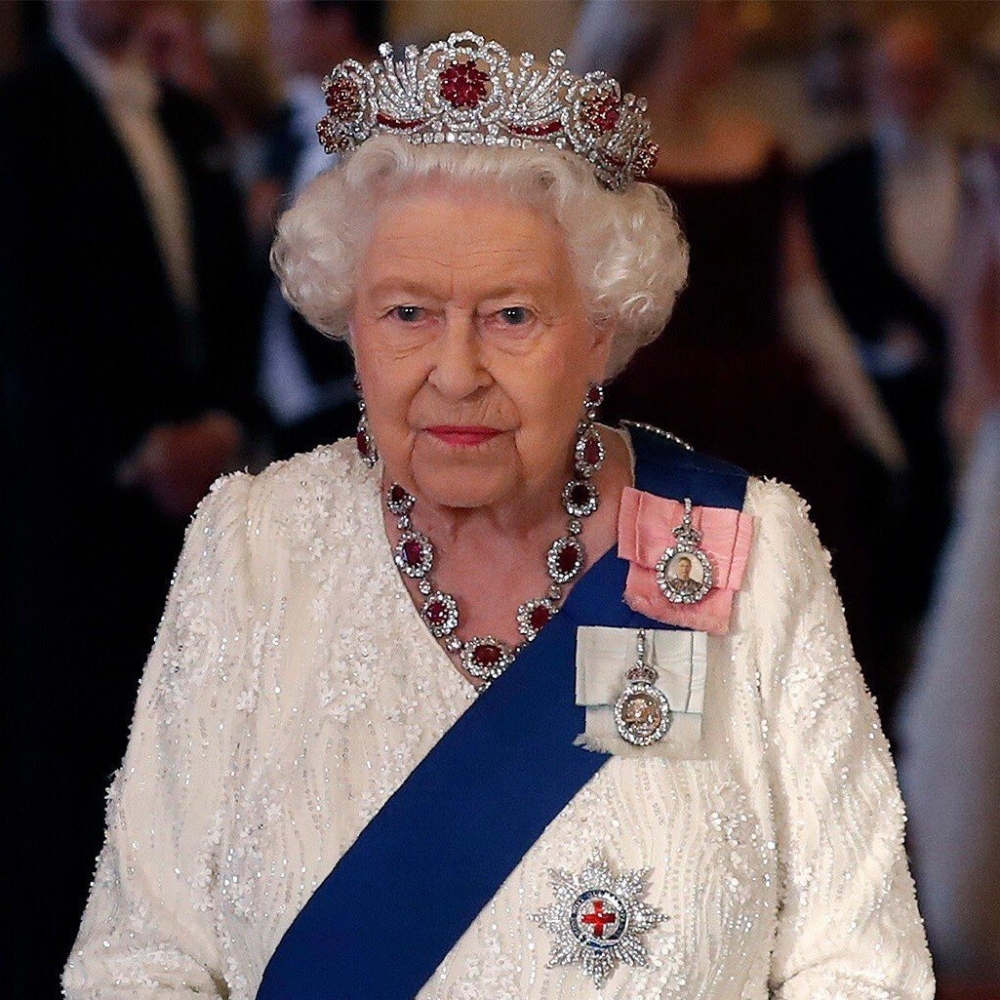
The Burmese Ruby Tiara has 96 rubies in total. Traditionally, rubies in Burmese culture ward off evil and illness. This tiara is made from a diamond floral tiara known as the Nizam of Hyderabad Tiara.
Delhi Durbar Tiara
It’s definitely clear that Camilla Parker Bowles is a fan of oversized tiaras! This large headpiece is known as the Delhi Durbar Tiara, and first belonged to Queen Mary. The tiara was initially made for a celebration in Delhi to celebrate the coronation of King George V as Emperor of India.

Queen Elizabeth inherited the tiara from her mother-in-law, and it was worn publicly by the Queen Mother. Now, the diamond and platinum piece is worn by Camilla.
The Grand Duchess Vladimir Tiara
As you can see from these pictures, the Grand Duchess Vladimir Tiara is alterable. That’s right, you can switch out your pearls for emeralds so your headpiece matches your outfit. Perfect!
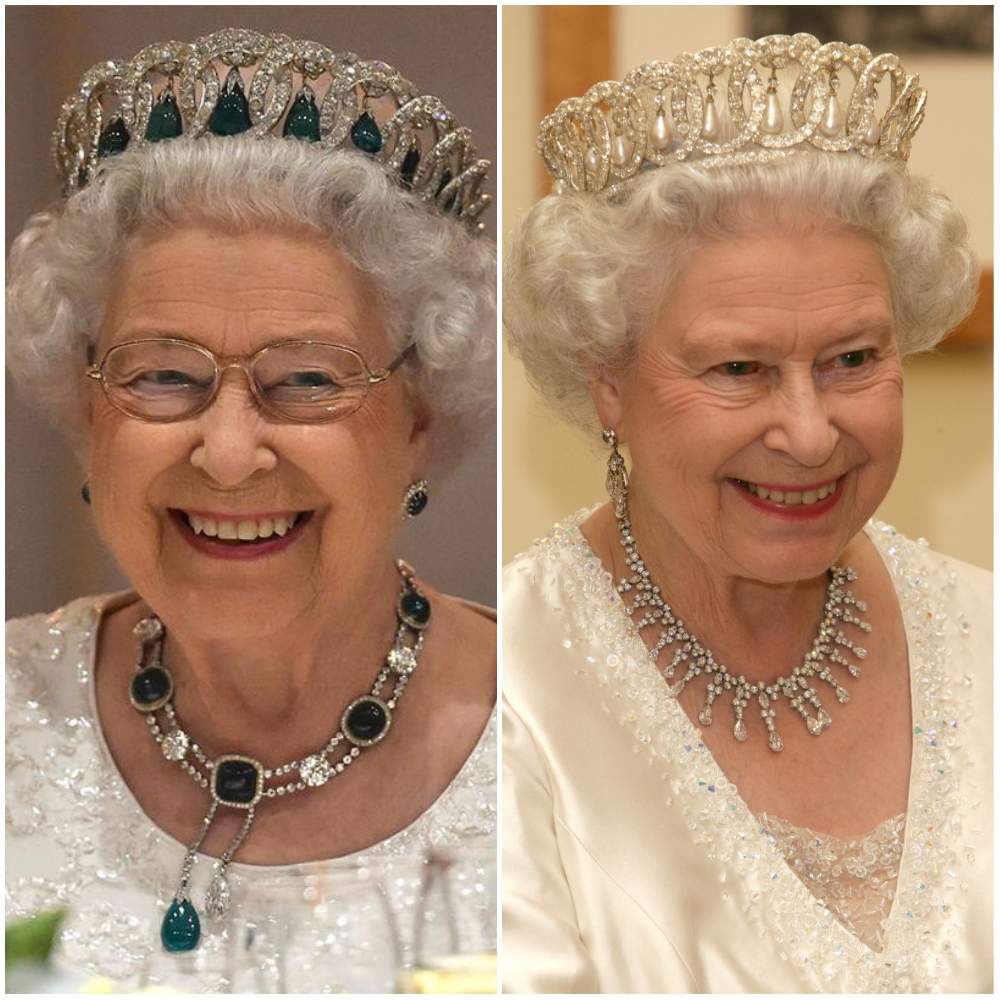
This tiara was commissioned by Duchess Vladimir in 1874 and later smuggled out of the country during the Russian Revolution. The tiara was then sold to Queen Mary, who made it alterable. Finally, the Queen inherited it from her grandmother, and has worn it many times throughout her reign.
The Gloucester Honeysuckle Tiara
As you may have noticed, Birgitte, Duchess of Gloucester is in possession of some seriously striking jewelry. This tiara was commissioned by Queen Mary in 1914. The royal was a fan of adjusting her jewelry, and often used parts of other pieces to create new jewels.
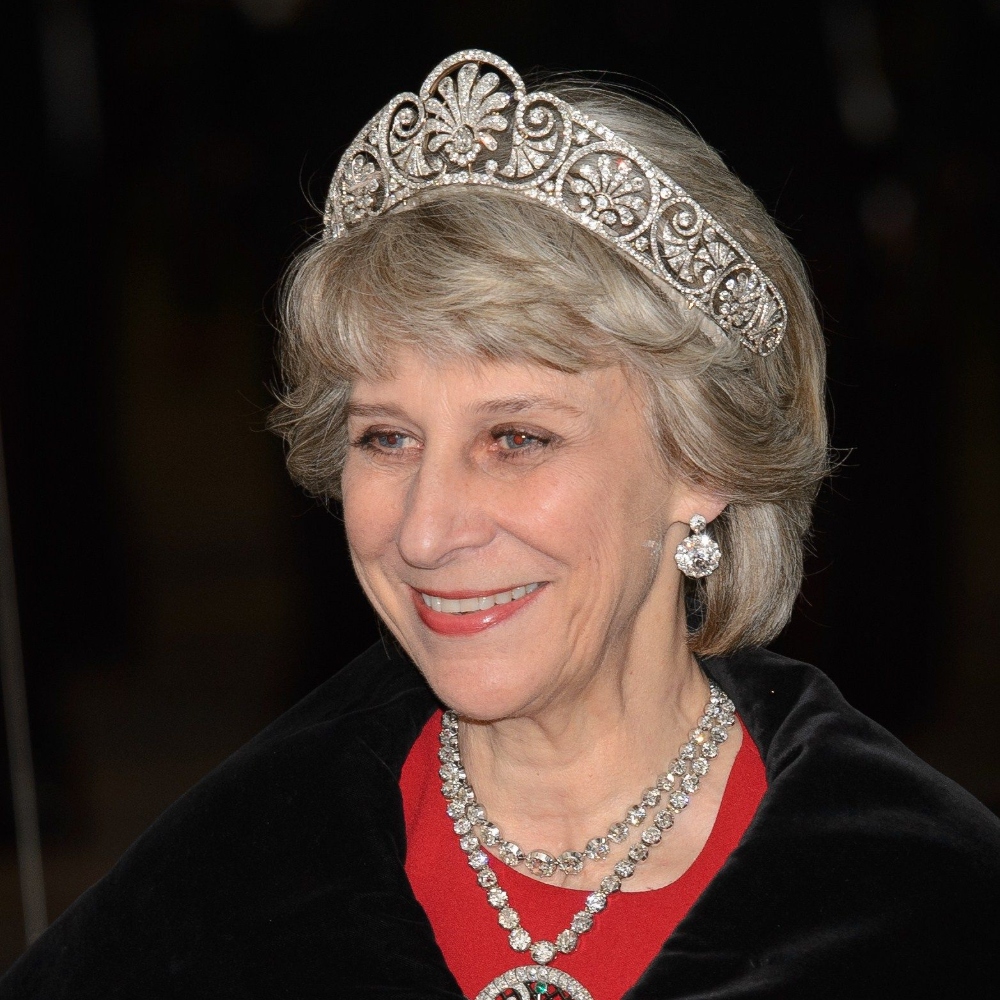
The central part of the tiara is a honeysuckle design, though earlier versions featured colored stones. Mary gave this piece to her daughter-in-law, Princess Alice, who gave it to her daughter-in-law, Birgitte.
The Kent Diamond and Pearl Fringe Tiara
Our next tiara also started off in Queen Mary’s possession. Next, it passed to her daughter-in-law, Princess Marina, Duchess of Kent. And then to her daughter, Princess Alexandra (pictured, left), who wore it regularly in the 1950s.
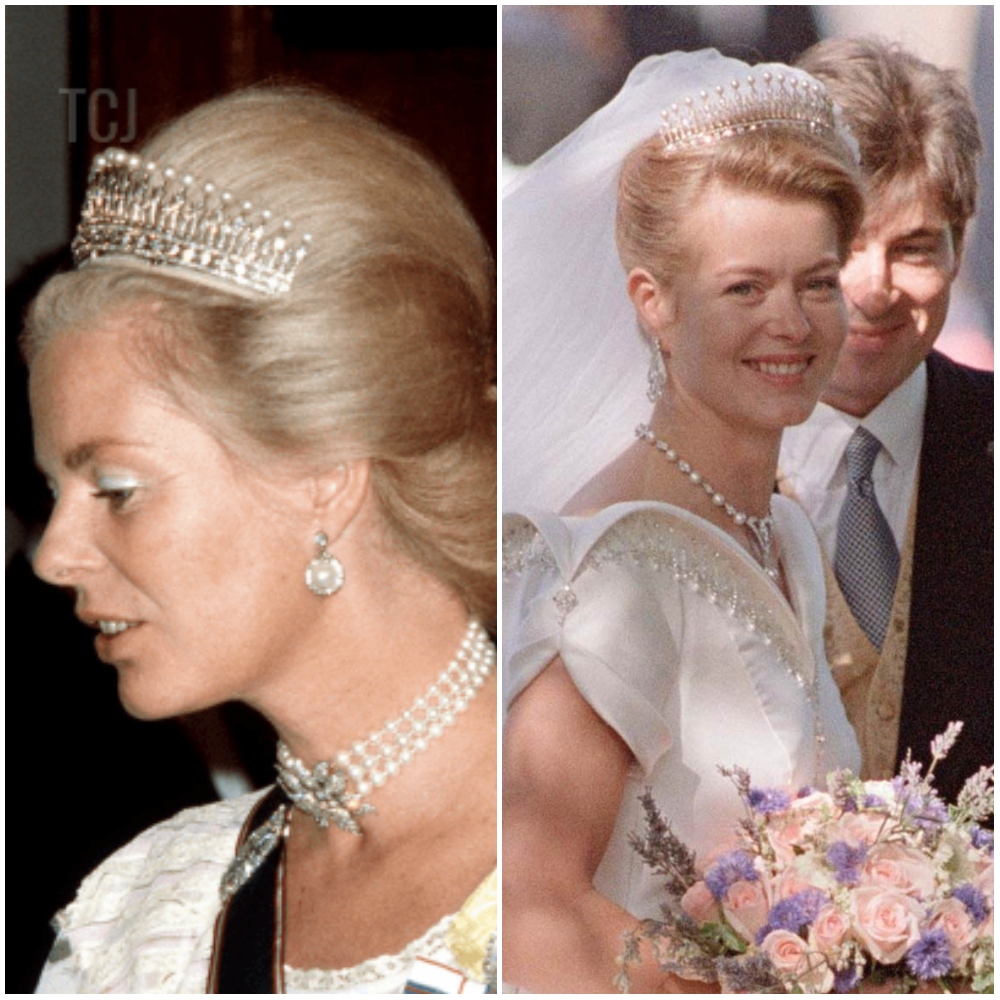
The comb-style tiara continued to be passed around the family, with Katharine Worsley wearing it on her wedding day in 1961. Then, her daughter, Lady Helen Taylor wore it in 1992 when she tied the knot (pictured, right). Since then, it hasn’t been spotted.
Greville Emerald Kokoshnik Tiara
Remember Margaret Greville, the socialite who bequeathed all of her jewelry to the Queen Mother? Well, this is another one of her pieces. This tiara is made with rose-cut pavé diamonds set in platinum and features six emeralds.
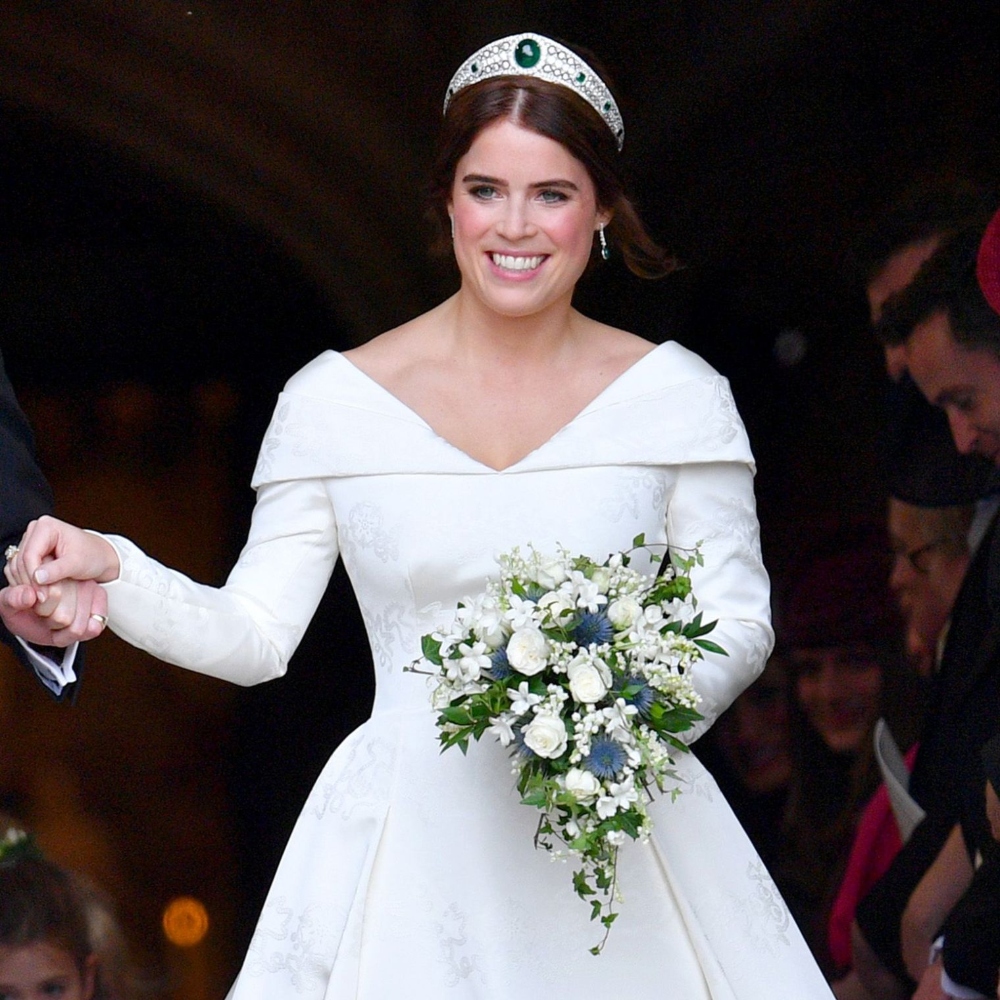
No one had worn the Greville Emerald Kokoshnik Tiara in public until Princess Eugenie chose it for her 2018 wedding. Eugenie borrowed the tiara from her grandmother, Queen Elizabeth, who inherited it from her mother. Unsurprisingly, the Princess chose not to wear a veil.
Kent City of London Fringe Tiara
When Princess Marina of Greece and Denmark married the Duke of Kent, she received the Kent City of London Fringe Tiara as a gift. The Princess wore the tiara regularly, and then loaned it to her daughter, Princess Alexandra, for her wedding (pictured, right).
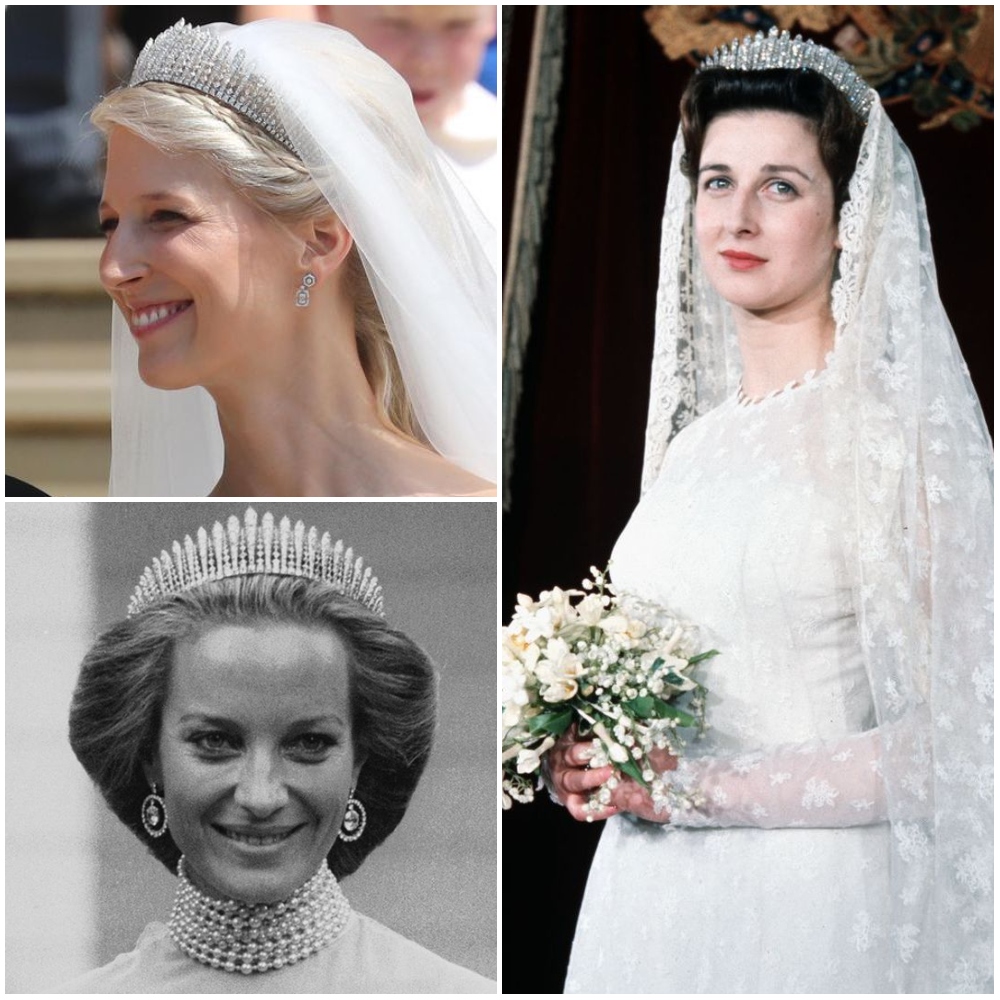
Later, the tiara passed to Marina’s son, Prince Michael of Kent. His wife, Marie Christine, wore the gorgeous headpiece for their wedding reception (pictured, bottom left). More recently, her daughter, Gabriella Windsor, wore the tiara for her wedding in 2019.
The Teck Turquoise Tiara
This is another of Queen Mary of Teck’s tiaras, and another piece owned by Birgitte, Duchess of Gloucester. This piece originally belonged to Mary’s mother, Princess Mary Adelaide. She gifted it to her daughter as part of a set, and Mary eventually tinkered with the design.
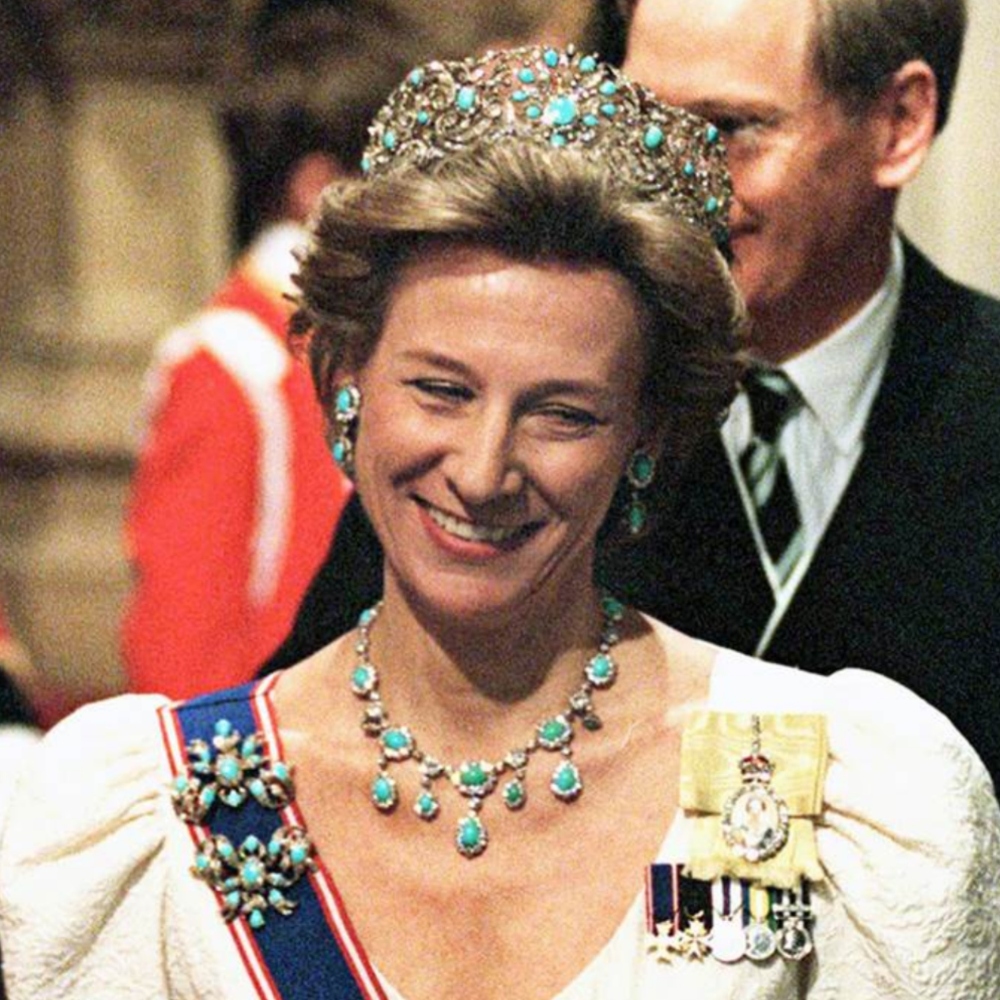
The Teck Turquoise Tiara then passed to Mary’s daughter-in-law, Princess Alice, who regularly wore the blue stoned headpiece. Alice then passed the tiara to her daughter-in-law, Birgitte, Duchess of Gloucester.
Queen Mary’s Boucheron Loop Tiara
Remember the Delhi Durbar Tiara? Well, it was made from various other tiaras, including this one — Queen Mary’s Boucheron Loop Tiara. Mary had this tiara commissioned in 1902, using diamonds given to her by a jeweler. The headpiece is made from 675 diamonds, and shaped in long pearled loops.

Alas, this tiara didn’t last long as Mary had it dismantled in 1911 to make a new piece. While it may be part of various other headpieces now, it looks wonderfully regal in this official portrait of Mary.